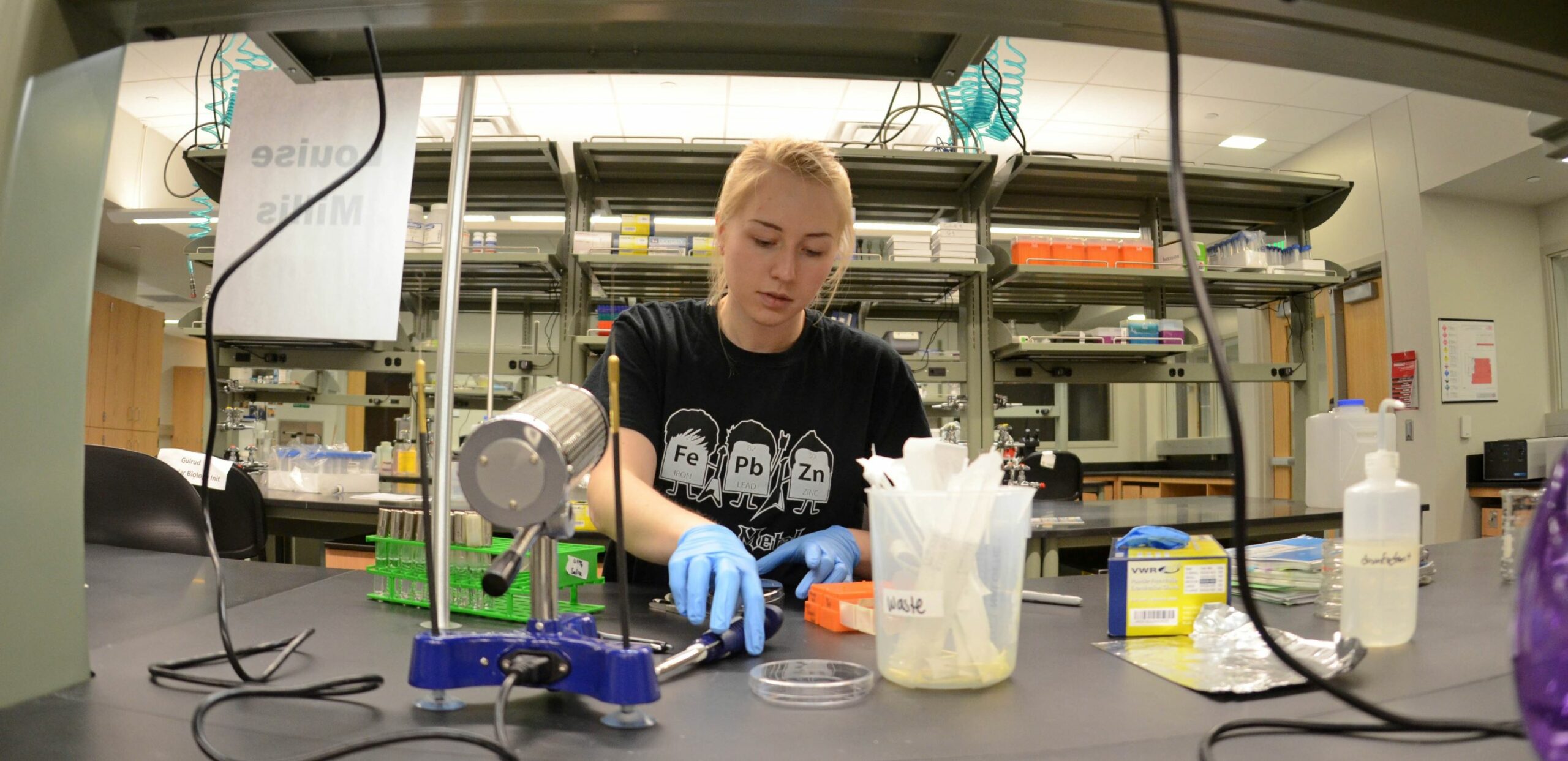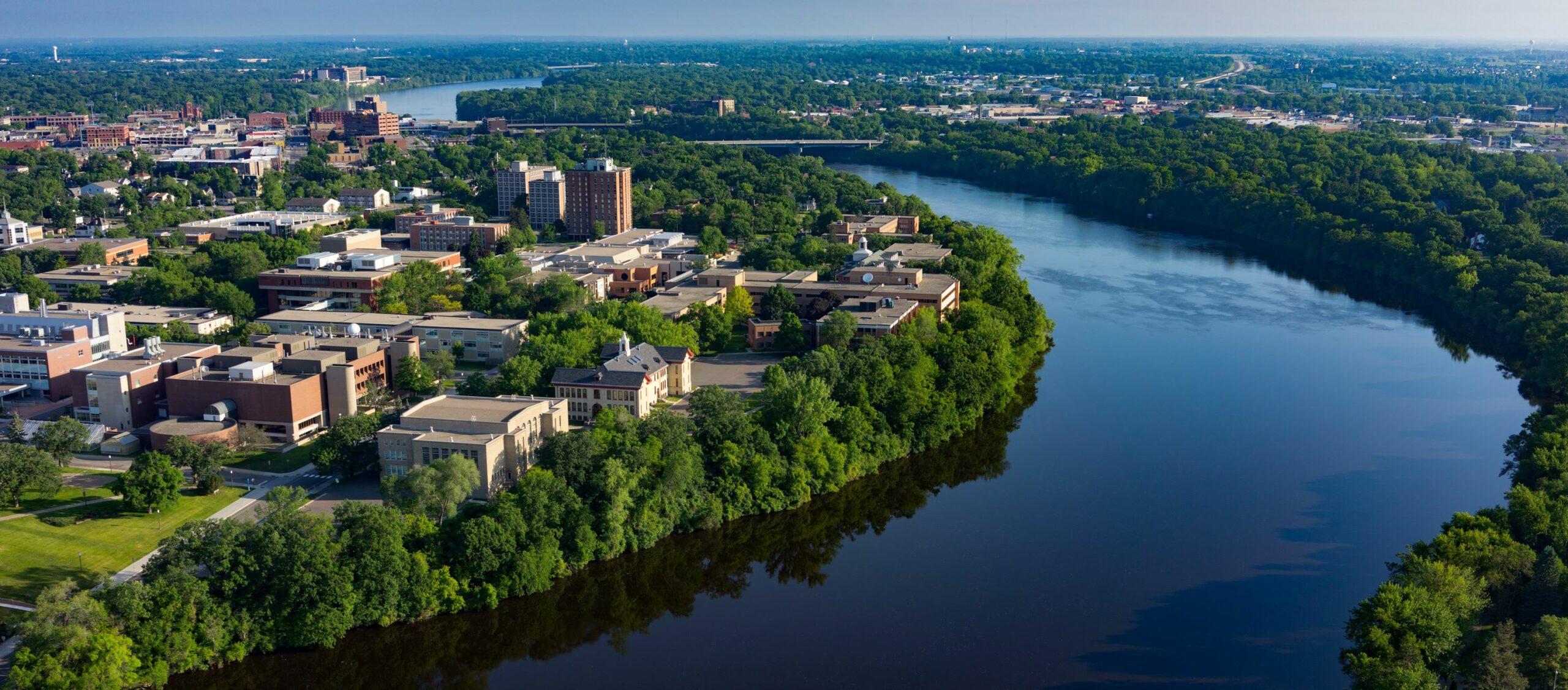It’s Time.
At St. Cloud State University and other regional comprehensive universities, that message has taken on new meaning over the past year. Faced with pandemic-induced challenges, they have had to adeptly recruit and retain students in new ways while continuing to build relationships with community partners they serve.
For St. Cloud State, It’s Time is more than just a message about being responsive during a crisis. It is an overarching vision under President Robbyn Wacker, Ph.D., who is seeking to transform the way her regional comprehensive is positioned for the future.
Not known for one specific realm of distinction, Wacker says St. Cloud State is taking a new approach to create growth, focusing on specific academic areas: holistic health and wellness, education, leadership and applied science and engineering. She says the university is not walking away from the liberal arts academic experience but instead better integrating it into the experience for students.
Much of the new strategy, she notes, is about kicking aside several huge assumptions – one being that students from the surrounding area will naturally select and attend the regional comprehensive university in central Minnesota following high school, without delaying enrollment or finding other paths.
“Those days are gone,” she says.
The It’s Time approach is more personalized, with relevant workforce pathways and a better return on investment for students at all stages of their educational journeys built on that mission and three others – extending its reach beyond its community, achieving academic distinction and supporting teacher-scholars. All of it will be under an umbrella that highlights diversity, equity and inclusion.
“We are incredibly excited about the future,” Wacker says. “Like many regional comprehensives, enrollment trends are changing and the funding model is challenging. We said, let’s look at the root cause of this underlying issue. It’s a complete rethinking of what it means to be a regional comprehensive university. Part of that is doubling down on what we want to be known for as a university. It’s time for regional universities to rethink how to be effective and to be competitive, to address the demographic declines that we’re facing so that we can thrive in the future.”
Wacker says St. Cloud State will strengthen its position in humanities, the arts and social sciences, while raising the bar on research and innovative teaching approaches to separate it from other universities, providing a place where students and faculty can thrive.
“With It’s Time, we’re breaking the mold by taking the best parts of different types of higher education institutions, including Research 1 universities, small private universities, public universities, community colleges, and more, to create a new type of experience,” she says.
“We want to continue building applied research centers and institutes where our faculty are absolutely connected to the community, to businesses, to school districts, and doing research and service to our community and involving students. We’re increasing our clinical and experiential learning opportunities for our students, connected with the community. And we’re doing so in a way that builds upon our strengths.”
The value of strong programs and partnerships
One example of St. Cloud State’s forward-thinking approach is in its Medical Laboratory Science program, which has been able to place 100% of students in jobs when they graduate. Demand for workers in labs and research facilities has been hot, spurred by the increase in healthcare needs and the COVID-19 pandemic, and resulting in a 7% shortage of workers in the field nationwide.
St. Cloud State has always had an influence on healthcare in the region through its research and buoyed by partnerships, including the CentraCare system. Its focus on clinical and non-clinical fields is growing through the university’s commitment to health and wellness.
“When our faculty in the Medical Laboratory Science program continued to see this growing demand in the industry, they wisely created more ways for individuals to earn a bachelor’s degree in the field,” Wacker says.
Students have two paths they can choose that accelerate filling those critical roles: a three-year degree program plus a year of an internship with a clinical affiliate, and a 2+2 agreement with North Hennepin Community College where certified lab technicians can complete their studies through St. Cloud State with a two-year bachelor’s degree program.
“It’s an example of leveraging other partners so that students find pathways, placement and the experience they need,” Wacker says. “Sometimes, we think we have to do the whole thing. We have to create the program and then deliver it, but these kinds of partnerships and programs, with high placement rates, students get employed almost immediately.”
Being able to provide that pipeline of talent has been fortuitous for both St. Cloud State and healthcare partners, especially in this moment.
“Who could have predicted that a year ago, there’d be such a huge demand,” Wacker says. “But we’ve been nimble to be able to adjust and ramp up programs like this and tweak them if necessary. We are fortunate to live in a region where there’s a great deal of partnerships and opportunities for our students to be engaged in a wide variety of careers and programs.”
The future of RCUs
Beyond holistic health and wellness, the It’s Time vision extends to education, where St. Cloud already has deep connections to school districts and has been a big provider of teachers through the years.
Leadership is another area poised for growth, and St. Cloud State is officially launching an Innovation and Partnerships Center in the fall that will be a hub for its community to connect with industry leaders to foster tech transfer and entrepreneurial ideas.
Minnesota being a hub for several Fortune 500 companies – 3M, Target, United Health, Best Buy, and General Mills, among others – meshes well with that entrepreneurial spirit and St. Cloud State’s other lean on applied science and engineering.
“We have students, faculty, and community members that have ideas to solve real-world issues in the public and private sector and we want to provide a place that will help incubate those ideas and take them to market,” Wacker says. “We are going to have a center to facilitate those connections.”
Staying competitive has been a challenge for regional comprehensives, especially during the pandemic, when others have also forged unique plans to reach students.
“Competition for students is real and is a piece of our reality that we cannot underestimate,” Wacker says. “Those larger institutions have deep pockets and brand visibility. They can cover tuition of low-income students and move into our recruitment space of those Pell eligible students. Community colleges across the country want to offer four-year degrees. So, the urgency is here. We have to do something bold, something different.”
Wacker’s advice to other regional comprehensives looking at the future:
“While we won’t compromise on our mission of serving students, we absolutely must redefine our role in higher education and create institutions that are distinctively different, nimble, innovative, and ready to serve a different generation of students.
“Everybody knows how to make cuts and balance a budget, but that alone is not sufficient to meet the social and economic challenges we have as regional comprehensive universities. We must reposition our universities now to be ready to advance new disciplines that will be in demand  five years from now. We need to be ready for that shift.”
Luckily for St. Cloud State, the It’s Time vision began prior to the pandemic, giving St. Cloud State enough of a window to begin its implementation and be able to pivot throughout COVID-19.
“What the pandemic has taught us is that we are on the right path to best serve students and our community,” Wacker said. “We are going to be in such a great position. We’re pretty optimistic about how we’re going to come out of this and our future.”








